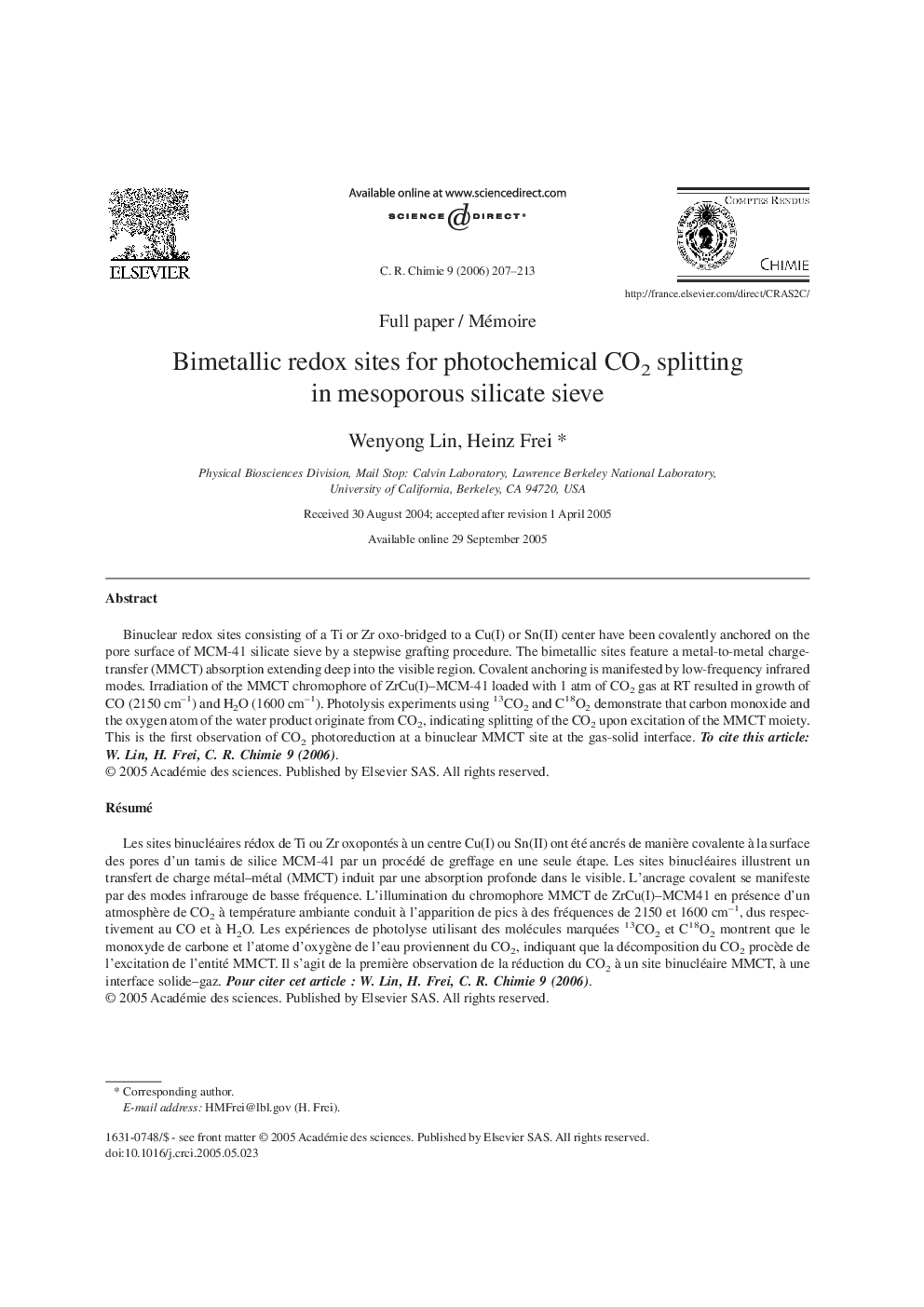| کد مقاله | کد نشریه | سال انتشار | مقاله انگلیسی | نسخه تمام متن |
|---|---|---|---|---|
| 171957 | 458500 | 2006 | 7 صفحه PDF | دانلود رایگان |

Binuclear redox sites consisting of a Ti or Zr oxo-bridged to a Cu(I) or Sn(II) center have been covalently anchored on the pore surface of MCM-41 silicate sieve by a stepwise grafting procedure. The bimetallic sites feature a metal-to-metal charge-transfer (MMCT) absorption extending deep into the visible region. Covalent anchoring is manifested by low-frequency infrared modes. Irradiation of the MMCT chromophore of ZrCu(I)–MCM-41 loaded with 1 atm of CO2 gas at RT resulted in growth of CO (2150 cm–1) and H2O (1600 cm–1). Photolysis experiments using 13CO2 and C18O2 demonstrate that carbon monoxide and the oxygen atom of the water product originate from CO2, indicating splitting of the CO2 upon excitation of the MMCT moiety. This is the first observation of CO2 photoreduction at a binuclear MMCT site at the gas-solid interface. To cite this article: W. Lin, H. Frei, C. R. Chimie 9 (2006).
RésuméLes sites binucléaires rédox de Ti ou Zr oxopontés à un centre Cu(I) ou Sn(II) ont été ancrés de manière covalente à la surface des pores d'un tamis de silice MCM-41 par un procédé de greffage en une seule étape. Les sites binucléaires illustrent un transfert de charge métal–métal (MMCT) induit par une absorption profonde dans le visible. L'ancrage covalent se manifeste par des modes infrarouge de basse fréquence. L'illumination du chromophore MMCT de ZrCu(I)–MCM41 en présence d'un atmosphère de CO2 à température ambiante conduit à l'apparition de pics à des fréquences de 2150 et 1600 cm–1, dus respectivement au CO et à H2O. Les expériences de photolyse utilisant des molécules marquées 13CO2 et C18O2 montrent que le monoxyde de carbone et l'atome d'oxygène de l'eau proviennent du CO2, indiquant que la décomposition du CO2 procède de l'excitation de l'entité MMCT. Il s'agit de la première observation de la réduction du CO2 à un site binucléaire MMCT, à une interface solide–gaz. Pour citer cet article : W. Lin, H. Frei, C. R. Chimie 9 (2006).
Journal: Comptes Rendus Chimie - Volume 9, Issue 2, February 2006, Pages 207–213